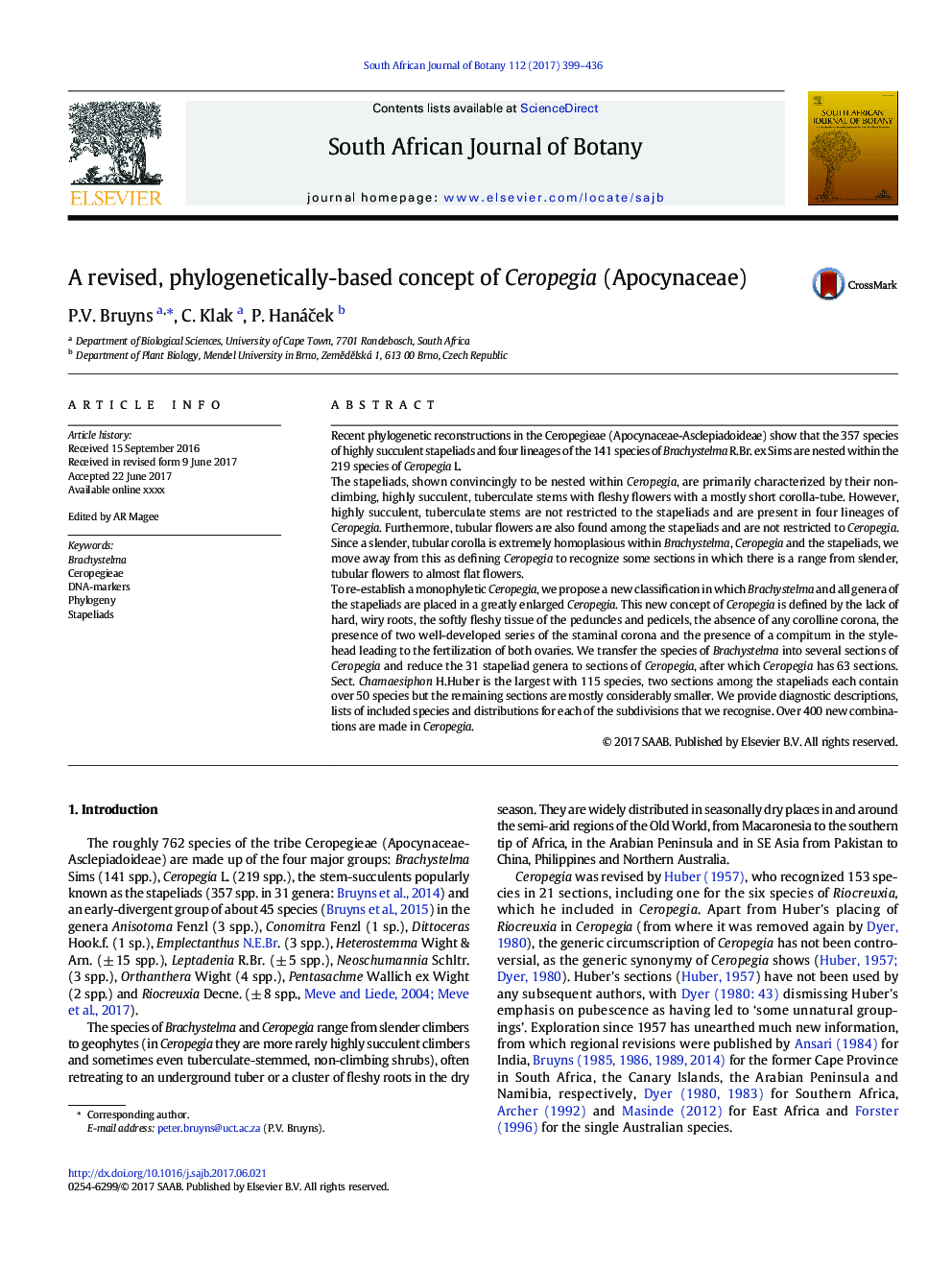| Article ID | Journal | Published Year | Pages | File Type |
|---|---|---|---|---|
| 5763197 | South African Journal of Botany | 2017 | 38 Pages |
Abstract
To re-establish a monophyletic Ceropegia, we propose a new classification in which Brachystelma and all genera of the stapeliads are placed in a greatly enlarged Ceropegia. This new concept of Ceropegia is defined by the lack of hard, wiry roots, the softly fleshy tissue of the peduncles and pedicels, the absence of any corolline corona, the presence of two well-developed series of the staminal corona and the presence of a compitum in the style-head leading to the fertilization of both ovaries. We transfer the species of Brachystelma into several sections of Ceropegia and reduce the 31 stapeliad genera to sections of Ceropegia, after which Ceropegia has 63 sections. Sect. Chamaesiphon H.Huber is the largest with 115 species, two sections among the stapeliads each contain over 50 species but the remaining sections are mostly considerably smaller. We provide diagnostic descriptions, lists of included species and distributions for each of the subdivisions that we recognise. Over 400 new combinations are made in Ceropegia.
Keywords
Related Topics
Life Sciences
Agricultural and Biological Sciences
Agronomy and Crop Science
Authors
P.V. Bruyns, C. Klak, P. HanáÄek,
